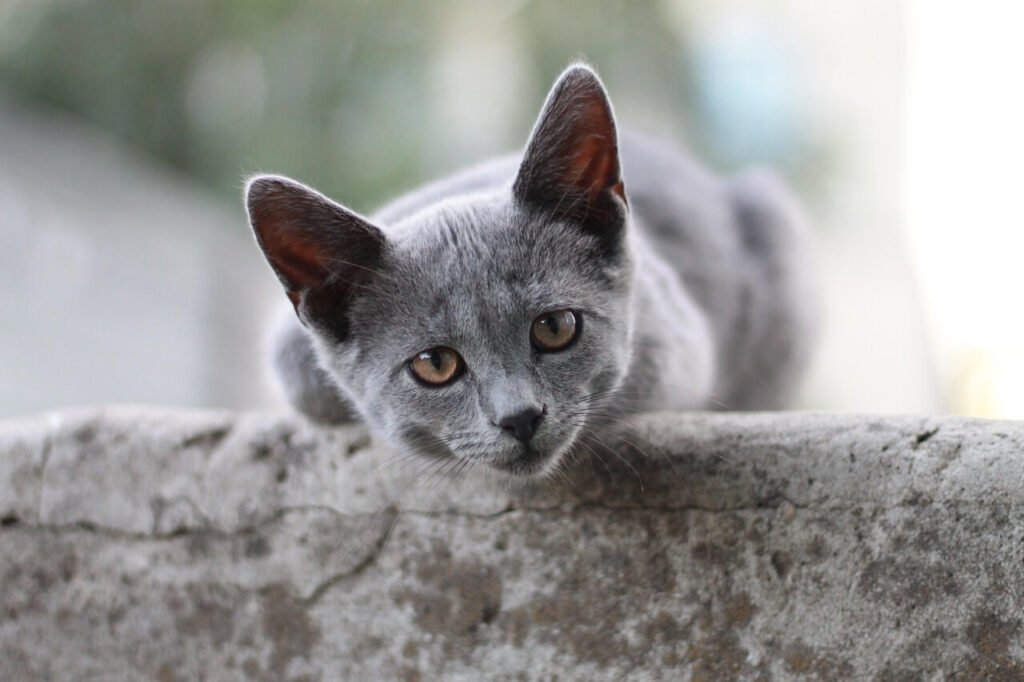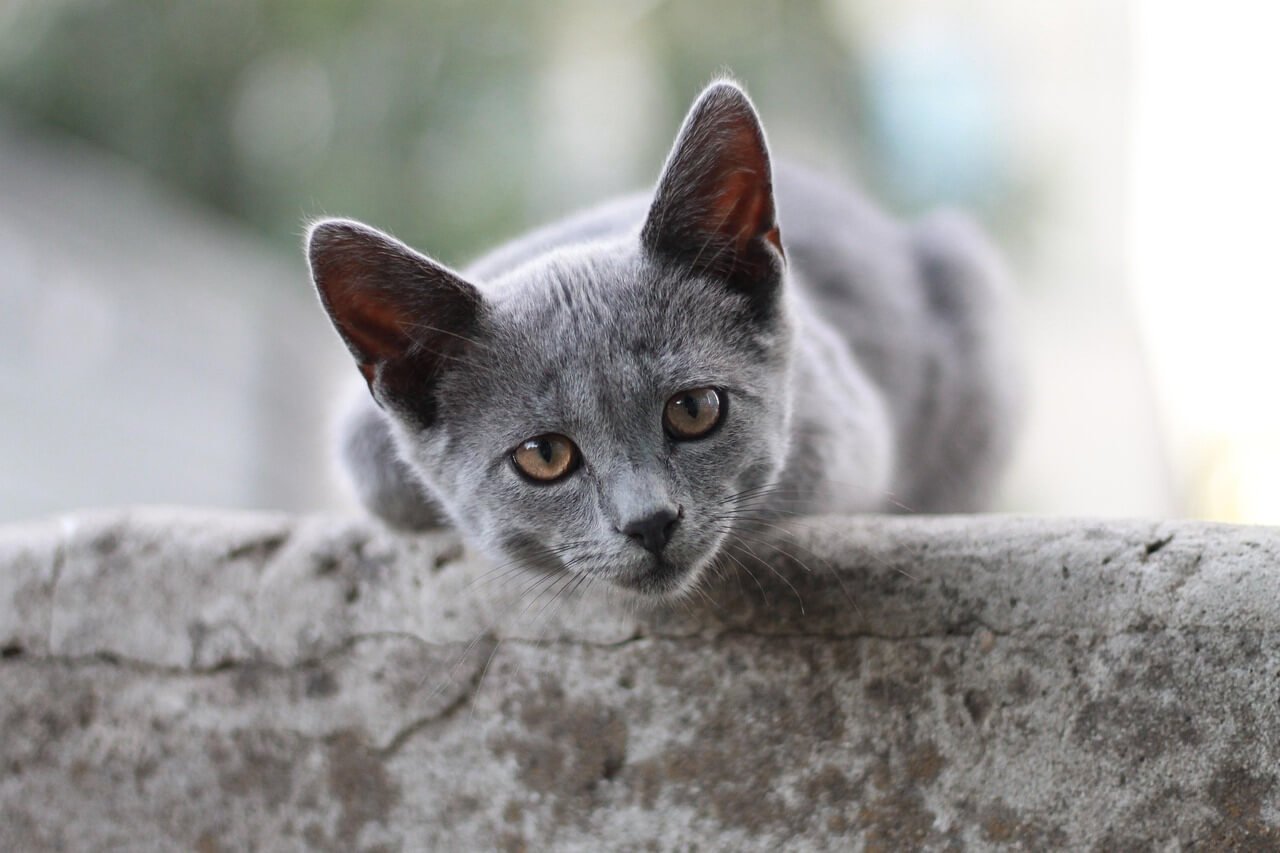Can Cats Control Their Tails?
Cats are fascinating creatures, known for their graceful movements and expressive body language. Among their most intriguing features is their tail—a versatile tool that seems to have a life of its own. But can cats truly control their tails, or are those flicks, twitches, and wags involuntary? The answer lies in understanding the intricate connection between a cat’s tail and its emotions, balance, and communication. Whether it’s a playful swish during a hunting game or a puffed-up display of fear, a cat’s tail tells a story worth exploring. Let’s dive into the science and behavior behind this captivating aspect of feline anatomy.
How Much Control Do Cats Have Over Their Tails?
While cats don’t have complete voluntary control over every movement of their tails, they do exert significant influence over them. Their tails serve multiple purposes, from expressing emotions to aiding in physical coordination. Here’s how cats interact with and manage their tails:
Voluntary Movements for Communication:
Cats deliberately use their tails to signal emotions like happiness, irritation, or curiosity. For example, a high, upright tail often indicates confidence.Involuntary Reactions to Emotions:
Some tail movements, such as twitching or puffing up, are automatic responses to excitement, fear, or agitation. These reactions are hardwired into their nervous system.Balance and Coordination:
Cats rely on their tails to maintain balance while walking on narrow surfaces or leaping through the air. This function operates almost instinctively.Reflexive Responses to Stimuli:
A sudden noise or touch may cause a cat’s tail to flick involuntarily, even if they’re otherwise calm and relaxed.Playful Tail Swishing:
During play, cats often swish their tails back and forth as a sign of focus or anticipation, blending voluntary and reflexive actions.
Understanding these nuances helps us appreciate the complexity of a cat’s tail movements and their role in both conscious and unconscious behaviors.
What Your Cat’s Tail Movements Mean
A cat’s tail is a powerful communication tool, conveying a wide range of emotions and intentions. Decoding these signals can deepen your bond with your feline companion.
High, Upright Tail:
A tail held high with a slight curve at the tip signals confidence, friendliness, and a desire for interaction.Puffed-Up Tail:
When a cat’s tail becomes bushy and puffed out, it indicates fear or aggression, often accompanied by an arched back.Flicking or Twitching Tail:
A rapidly flicking tail suggests irritation, annoyance, or overstimulation—signs you should give your cat some space.Low, Tucked Tail:
A tail tucked close to the body reflects insecurity, submission, or discomfort in a situation.Gentle Swishing Tail:
Slow, deliberate swishing often means your cat is focused, whether on prey during play or something that has caught their attention.
By observing these movements, you can better understand your cat’s mood and respond appropriately to their needs.
Check this guide 👉Are Cat Tails Sensitive? Best 7 Expert Tips!
Check this guide 👉Decoding the Mystery of Cat Tail Wagging: Best 7 Tips!
Check this guide 👉Understanding Why Cats Swish Their Tails: Best 7 Expert Tips

Tail Position | Emotional Meaning |
|---|---|
High, upright with a curve | Confidence, friendliness, readiness to engage |
Puffed-up and bushy | Fear, defensiveness, or aggression |
Rapidly flicking or twitching | Irritation, annoyance, or overstimulation |
Low, tucked close to the body | Insecurity, submission, or discomfort |
Slow, gentle swishing | Focus, curiosity, or concentration |
The Role of a Cat’s Tail in Balance and Movement
Beyond communication, a cat’s tail plays a crucial role in maintaining balance and enhancing agility. Its functionality is especially evident in dynamic situations.
Counterbalancing While Leaping:
When jumping from one surface to another, a cat’s tail acts as a counterbalance, helping them land gracefully.Navigating Narrow Spaces:
Cats walking along fences or narrow ledges rely on their tails to stabilize their bodies and prevent falls.Enhancing Athletic Performance:
During high-speed chases or sudden turns, a cat’s tail helps them adjust their trajectory and maintain control.Assisting in Climbing:
When climbing trees or furniture, a cat’s tail provides additional support and stability.Compensating for Missing Limbs:
In rare cases where a cat loses a limb, their tail becomes even more critical for maintaining equilibrium.
The tail’s role in physical coordination underscores its importance in a cat’s daily activities and survival instincts.
Common Misconceptions About Cat Tails
Despite their expressive nature, cat tails are often misunderstood. Dispelling these myths can help foster a deeper appreciation for our feline friends.
Myth: A Wagging Tail Always Means Anger:
Unlike dogs, a wagging tail in cats doesn’t necessarily indicate anger—it could mean excitement, focus, or irritation depending on context.Myth: Cats Can Fully Control Every Tail Movement:
While cats influence many tail motions, some, like reflexive twitches, occur without conscious effort.Myth: Tailless Cats Are Less Balanced:
Breeds like the Manx are naturally tailless but adapt well to life without a tail, relying on other senses and muscles for balance.Myth: A Puffed-Up Tail Is Always Aggressive:
While aggression can cause a puffed-up tail, fear or surprise may trigger the same reaction.Myth: Tail Injuries Don’t Affect Cats Much:
Tail injuries can significantly impact a cat’s mobility, communication, and overall well-being, requiring prompt veterinary attention.
Clarifying these misconceptions highlights the complexity and importance of a cat’s tail in their daily lives.
Signs of a Healthy Cat Tail
A healthy tail is essential for a cat’s overall well-being. Recognizing the signs of a healthy tail helps ensure your cat stays happy and active.
Smooth, Shiny Fur:
A well-groomed tail with shiny fur indicates good health and proper nutrition.Flexible Movement:
A healthy tail moves freely without stiffness or limping, allowing your cat to express themselves fully.No Visible Injuries:
Check regularly for cuts, swelling, or bald patches, which could signal underlying issues.Consistent Behavior:
Sudden changes in tail movement or posture may indicate pain or illness requiring veterinary care.Clean and Odor-Free:
A clean tail free of unusual odors suggests your cat is grooming effectively and maintaining hygiene.
Monitoring these signs ensures your cat’s tail remains a strong and expressive part of their anatomy.
How to Handle Tail Injuries in Cats
Tail injuries, though uncommon, can significantly impact a cat’s quality of life. Knowing how to identify and respond to these injuries is crucial for their recovery.
Look for Obvious Signs:
Swelling, bleeding, or visible fractures are clear indicators of trauma to the tail.Observe Behavioral Changes:
Reluctance to move, excessive licking, or vocalization may suggest pain or discomfort.Prevent Further Damage:
Keep your cat confined to a safe space until you can consult a veterinarian.Avoid Home Treatments:
Refrain from attempting to splint or bandage the tail yourself, as improper handling can worsen the injury.Seek Professional Help:
A vet can diagnose the issue accurately and recommend appropriate treatment options.
Prompt medical attention ensures your cat recovers quickly and regains full use of their tail.
Fun Facts About Cat Tails
Cats’ tails are not only functional but also full of fascinating quirks. Here are some fun facts to deepen your appreciation for this remarkable appendage.
Longest Recorded Tail:
The longest cat tail ever measured belonged to a Maine Coon named Cygnus, measuring over 17 inches!Tailless Breeds Exist:
The Manx breed is famous for its lack of a tail, a genetic trait resulting from natural mutation.Tails Aid in Thermoregulation:
Cats sometimes use their tails to shield themselves from cold or wind, acting as a built-in scarf.Communicative Complexity:
Research shows that cats use over a dozen distinct tail positions to convey different messages.Unique Patterns:
Just like fingerprints, no two cat tails have identical markings or patterns, making each one special.
These facts highlight the incredible diversity and adaptability of cats’ tails, adding charm to their already enchanting personalities.
Frequently Asked Questions About Cat Tails
Why does my cat’s tail flick when I pet them?
A flicking tail during petting usually signals irritation or overstimulation. It’s best to pause and let your cat relax.
Do cats feel pain in their tails?
Yes, tails contain nerves and muscles, so injuries or excessive handling can cause discomfort or pain.
What does it mean when a cat wraps its tail around me?
This gesture is a sign of affection and trust, similar to a hug or cuddle.
Can cats live without tails?
Yes, some breeds, like the Manx, are born without tails and adapt well, though they may face unique challenges.
Why does my cat’s tail thump on the ground?
A thumping tail often indicates intense focus or frustration, especially during play or hunting scenarios.
Understanding the Language of a Cat’s Tail
A cat’s tail is far more than just an extension of their body—it’s a vital tool for communication, balance, and self-expression. By paying attention to their tail movements, we gain valuable insights into their emotions and needs. Whether it’s a joyful greeting, a warning sign, or a display of athleticism, a cat’s tail speaks volumes about their inner world. As cat owners, learning to interpret these subtle cues strengthens our connection with our feline companions and enriches the bond we share. So next time your cat flicks, swishes, or curls their tail, take a moment to listen—it might just be telling you something important!
Understanding Cryptosporidium in Cats: Best 7 Expert Tips! – Spot symptoms, treat safely, and stop parasite spread in your home.
Understanding Cryptosporidium in Dogs: Best 7 Expert Tips! – Learn symptoms, treatment & prevention for this stubborn gut parasite.
Understanding Syringomyelia in Cats: Best 7 Expert Tips! – Recognize signs, manage pain, and support your cat’s neurological health with vet-backed guidance.
Understanding Syringomyelia in Dogs: Best 7 Expert Tips! – Expert insights on symptoms, MRI diagnosis, pain management & quality of life.





